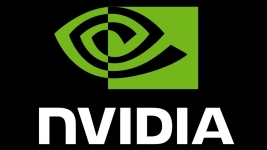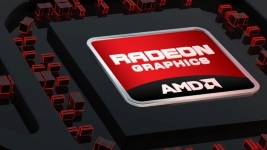AMD greener than NVIDIA?
HPC Review – AMD has taken hold of the HPC “green” as evidenced by his first place in November Green500. What is the history of this project?
JC Baratault: It all started in March 2014, when AMD announced the S9100 server accelerator. Performance was astounding on professional apps, both in single and double precision. In parallel, the workstation release was in development, knowing that AMD, servers and workstation cards have the same specifications. On this basis, we had to demonstrate the actual performance of these cards and AMD’s HPC skills. For this project, we were determined not to mount a cluster showcase designed just for a benchmark. In responding to the tender of a German client (GSI), we have built a petaflop machine in October, consisting of 600 FirePro S9150 accelerators, and the project has advanced so well that we were able to have the results of bench in time to present officially in November Green500 and with 5.27 Gflops / watt, get that first place that we are so pleased with. For AMD, it was a unifying project internally, on both hardware and software aspects. GSI actually wanted to work in OpenCL because the machine was to be used in “real” for applied physics and medical research. It was not a “temporary” cluster to be dismantled after the tests …
HPCR – Do you plan to keep the top spot in the Green500 next July?
JCB – You know how to do the tests: everything is based on Linpack, reference bench for the Top500 and Green500. Linpack is a stress test for the hardware, sometimes beyond reason. This is why it is interesting for us and of course we will do everything to keep that top spot. But the battle will be tough because our competitors have been stung! However, our goal is to place new machines at the top of the rankings, that is to say, to boost our positioning. And do not forget that in the end, we must remain modest. A benchmark remains a benchmark; what really matters is the consistency of our strategy.
HPCR – Given the global ecological, energy efficiency has become a major constraint for high-level computing, at least as far as pure performance. How does AMD cope with this issue?
JCB – Energy efficiency of our components (CPU and GPU) is now THE major criterion for their design. I can not tell you better … The best illustration of this is our current SoC 32 and 64 bits, and our partnership with ARM for the development of APU 32 and 64 bits.
HPCR – Precisely, how soon can we predict the advent of chip incorporating a CPU and a real throttle on the same die?
JCB – It is premature to even talk about products in development, but in the coming months – say June or July – SoC Carizzo (x86 64-bit) will allow publishers and R & D centers to start programming this truly unified architecture in an open environment. Carizzo by itself will not issue an HPC-class performance level but it is on this platform that will be our next SoC based HPC. In this regard, I want to emphasize that in AMD x86 and ARM are considered on an equal footing. We announced back in our 2014 Heteregeneous Computing strategy a socket compatibility between x86 and ARM products. That is, in the context of your question, a major advance.
HPCR – And memory?
JCB – There are now two approaches, which will be completed in the coming months. On one hand, the discrete GPU (note: PCIe bus). There, AMD will offer 32GB GPU cards with a 512-bit GDDR5 memory bus, offering more storage space for memory-intensive applications. On the other, a new memory called HBM (High Bandwidth Memory) will arrive. It will deliver up to 512 GB / s, will be used initially on mainstream graphics cards and, probably within three to four years on “products” HPC. These are two approaches because, for some time, HBM will offer less space. For maximum memory capacity in HPC, accelerators remain the crème de la crème. It is, moreover, what the Green500 highlights.
© HPC Today 2024 - All rights reserved.
Thank you for reading HPC Today.































